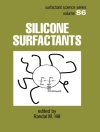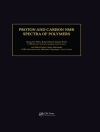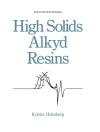Membranes have emerged over the last 30 years as a viable water treatment technology. Earth’s population is growing and the need for alternative ways to generate potable water is rising. The recent advent of nanotechnology opens the door to improving processes in membrane
technology, which is a promising step on the way to solving the earth’s potable water problem. Current performance is enhanced and new concepts are possible by engineering on the nanoscale. This book presents key areas of nanotechnology such as fouling tolerant and robust membranes, enhanced destruction of pollutants and faster monitoring of water quality.
‘Functional Nanostructured Materials and Membranes for Water Treatment’ is part of the series on Materials for Sustainable Energy and Development edited by Prof. G.Q. Max Lu. The series covers advances in materials science and innovation for renewable energy, clean use of fossil energy, and greenhouse gas mitigation and associated environmental technologies.
Daftar Isi
TARGET AREAS FOR NANOTECHNOLOGY DEVELOPMENT FOR WATER TREATMENT AND DESALINATION
The Future of Water Treatment: Where Should We Target Our Efforts?
Practical Considerations for Nanotechnology Developers
The Water Treatment Market for New Nanotechnology
Purpose of This Book
Concluding Remarks
DESTRUCTION OF ORGANICS IN WATER VIA IRON NANOPARTICLES
Introduction
Nanoparticles as Catalysts
Advanced Oxidation Processes
Nano Zero-Valent Iron (n ZVI)
Bimetallic n ZVI Nanoparticles
Summary
PHOTOCATALYSIS AT NANOSTRUCTURED TITANIA FOR SENSING APPLICATIONS
Background
Fabrication of Ti O2 Photoanodes
The Sensing Application of Ti O2 Photocatalysis
The Sensing Application of Ti O2 Photoelectrocatalysis
Photocatalytic Gas Sensing
Conclusions
MESOPOROUS MATERIALS FOR WATER TREATMENT
Adsorption of Heavy Metal Ions
Adsorption of Anions
Adsorption of Organic Pollutants
Multifunctional Modification of Sorbents
Photocatalytic Degradation of Organic Pollutants
Conclusions and Outlook
MEMBRANE SURFACE NANOSTRUCTURING WITH TERMINALLY ANCHORED POLYMER CHAINS
Introduction
Membrane Fouling
Strategies for Mitigation of Membrane Fouling and Scaling
Membrane Surface Structuring via Graft Polymerization
Summary
RECENT ADVANCES IN ION EXCHANGE MEMBRANES FOR DESALINATION APPLICATIONS
Introduction
Fundamentals of IEMs and Their Transport Phenomena
Material Development
Future Perspectives of IEMs
Conclusions
THIN FILM NANOCOMPOSITE MEMBRANES FOR WATER DESALINATION
Introduction
Fabrication and Characterization of Inorganic Fillers
Fabrication and Characterization of TFC/TFN Membranes
Membrane Properties Tailored by the Addition of Fillers
Commercialization and Future Developments of TFN Membranes
Summary
APPLICATION OF CERAMIC MEMBRANES IN THE TREATMENT OF WATER
Introduction
Membrane Preparation
Clarification of Surface Water and Seawater Using Ceramic Membranes
Ceramic Membrane Application in the Microfiltration and Ultrafiltration of Wastewater
Conclusions and Prospects
FUNCTIONAL ZEOLITIC FRAMEWORK MEMBRANES FOR WATER TREATMENT AND DESALINATION
Introduction
Preparation of Zeolite Membranes
Zeolite Membranes for Water Treatment
Conclusions and Future Perspectives
MOLECULAR SCALE MODELING OF MEMBRANE WATER TREATMENT PROCESSES
Introduction
Molecular Simulations of Polymeric Membrane Materials for Water Treatment Applications
Molecular Simulation of Inorganic Desalination Membranes
Molecular Simulation of Membrane Fouling
CONCLUSIONS: SOME POTENTIAL FUTURE NANOTECHNOLOGIES FOR WATER TREATMENT
Nanotubes
Graphene
Aquaporins
Metal-Organic, Zeolitic Imidazolate, and Polymer Organic Frameworks
Conclusions
INDEX
Tentang Penulis
Prof Mikel Duke has worked in membrane research for almost 10 years and has 36 peer-review publications in this field. He received his BE and Ph D degree from the University of Queensland in environmental and chemical engineering and has worked at the Australian Research Council Centre of Excellence for Functional Nanomaterials and Arizona State University since then. His focus is on development of ceramic membranes that operate at the molecular level by optimizing functional material parameters. He is the recipient of a prestigious Endeavour Executive Award and the founding chair of the Membrane Society of Australasia.
Professor Dongyuan Zhao is Cheung Kong Professor of the China Education Ministry, Vice Director of the Advanced Materials Laboratory at Fudan University and Visiting Professor at Monash University (Australia). He is an academician of the Chinese Academy of Sciences. With over 350 peer-reviewed papers earning >20000 citations he is the 65th Most-Cited Scientist in Chemistry (according to ISI). His research interests are in the synthesis of porous materials and their application in catalysis, separation, photonics, sorption, environmental decontamination, sensors, etc.
Prof. Raphael Semiat is the Yitzhak Rabin Memorial Chair in Science, Engineering and Management of Water Resources at Technion – Israel Institute of Technology. He has wide industrial experience in research and development of chemical processes. His current interests and activities are centered on water technologies, including desalination, chemical-environmental processes and use of nano particles for removal of organic matter and heavy metals from water. He has published more than 140 papers in scientific journals.












